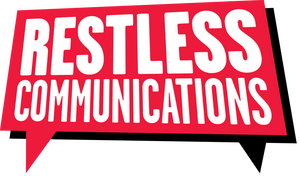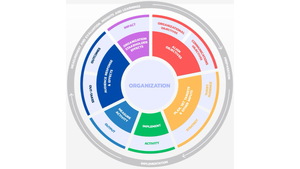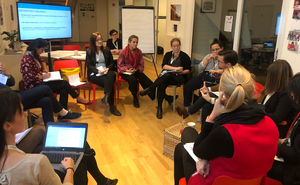Understanding and measuring influence has vexed social media communicators for years.
Two good places to start would be the release of Brian Solis/Altimeter’s “how to” guide, The Rise of Digital Influence on 21 March, and last week’s panel debate (22 March 2012) at the Guardian’s Changing Media Summit, featuring Leo Ryan (group head of social at Ogilvy), Andrew Grill (UK CEO of Kred), Bonin Bough (global head of digital at Kraft), Philip Sheldrake (Author – The Business of Influence), and Joanna Geary (digital development editor at Guardian News and Media).
But neither one will nail it. Because trying to find a single algorithm to measure influence is like trying to nail jelly to a wall. Fun trying. Maybe a degree of success, but you’re going to basically end up in a bit of a mess.
That doesn’t mean you shouldn’t try. It just means that you shouldn’t rely on a single algorithm. Your mix of qual and quant tools and analytics has to have the right balance. Algorithms should be the starting point, not the end point.
And above all, it means you need to ask the right question to start with. You need to know exactly what you’re trying to measure, why you’re trying to measure it. And what all the proxies are along the way. Quite separate to that you need to ensure your tools aren’t being gamed – which they all are to a greater or lesser extent.
Yes, it’s possible to use tools like Peer Index, or Klout (or younger and better upstart Kred) to put a measure on ‘influence’, but influence always depends on the context of the question. By way of analogy, which of those tools would tell us: Who is the most influential journalist when it comes to reporting last week’s budget? Or even, which is the most influential newspaper, or broadcast channel? It all depends on who’s asking, and why they’re asking. Ask five different people, you’ll get five different answers, depending on their different perspectives. There’s no way an algorithm can answer the question and get it ‘right’.
Back in the day some people used to think that content is king. Then it became conversation. Now it’s context. While empirical data is always useful, it is shortsighted to run any ‘influencer’ campaign based on that data alone. And naive to base it on any one number which is spat out by an influence-identification tool without understanding individuals’ pre-disposition and motivation alongside it, as well as desired outcomes.
Brian Solis is right when he writes:
Before you start to even try and measure influence, you need to understand what you want to achieve at the end of the process.
Which – hang on – is exactly what good PR people have been doing for years. Using a mix of qual and quant data, and a decent brief.
I’ve lost track of the number of stakeholder maps I’ve helped draw up using a combination of readership figures, demographics, gut feel and (the missing link with most of these tools apart from Kred) that stakeholder’s willingness to listen/participate – “to be influenced” if you like.
So I was disappointed to see that Klout featured so heavily in the Altimeter case studies. It’s an incredibly blunt tool, and extremely easily gamed. And it takes no account of people’s ‘receptiveness’ to what is essentially a PR approach. People who know their own Klout score know what’s expected of them when they’re invited to something. There is still no such thing as a free lunch. Or a free status update.
I therefore hope that the case studies were actually much more sophisticated than they’ve been presented. From my experience, all the UK mobile phone networks are already significantly more advanced in their social CRM and influencer engagement than the Windows Phone case study. And Nokia have been running a textbook influencer-engagement programme with 1000 Heads for years.
Having said that, though, Altimeter’s Influence Action Plan is spot on – maybe because it reads to me as a decent guide to running an effective PR campaign. The only thing that’s different compared to 5 years ago is the scale and the channels/tools to reach people. And while there are now tools to help measure influence which can cope with this recent change in scale and channels, I worry that the more the process is automated (i.e. based exclusively on Klout scores) the blunter and ultimately less effective it becomes.
I’m willing the tools to get better, I really am. Altimeter’s reviews and feature trackers are really useful in picking out some of the highlights. But those tools are never going to be as effective as people within organisations having a relationship with the people they are trying to influence – the ‘permeability’ that, as a social business consultant, I’m helping clients develop on a daily basis.
Yes, use the tools can help identify potential influencers. But those tools are better used, in my opinion, as a starting point for further research, not as a definitive list. Simply using an algorithmic tool to start a ‘transactional’ relationship will (as Dinah Boyd acknowledges) kickstart the Heisenburg uncertainty principle – just as professional ‘compers’ have mastered the “RT to win” phrase on Twitter.
Influence totally depends on content, context and nuance. That’s the problem with trying to measure it. Tools can help. But – although it’s time-consuming – eyeballs and gut feel should always play a bigger part in doing so.
(This is a version of a post originally written for Social Media Influence)






